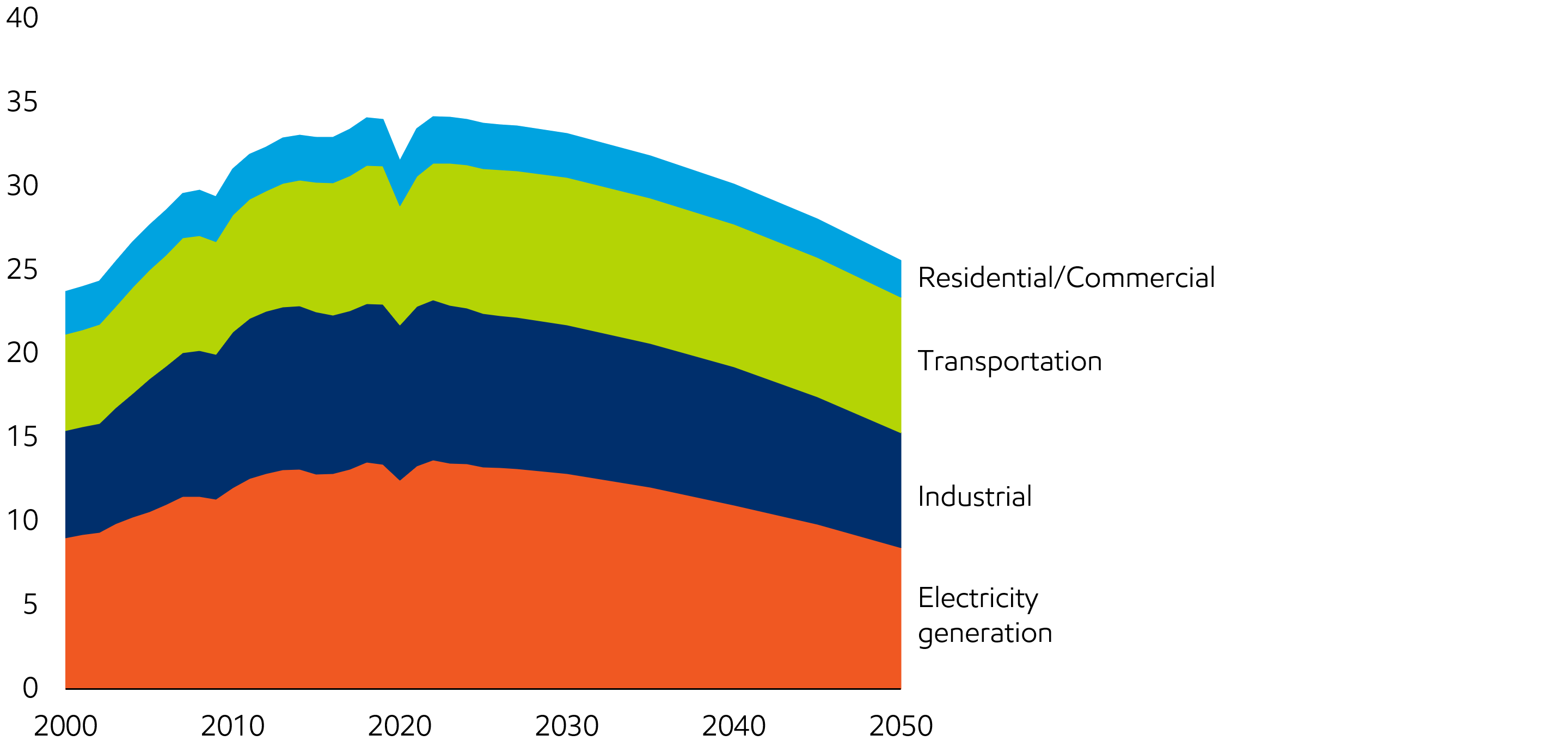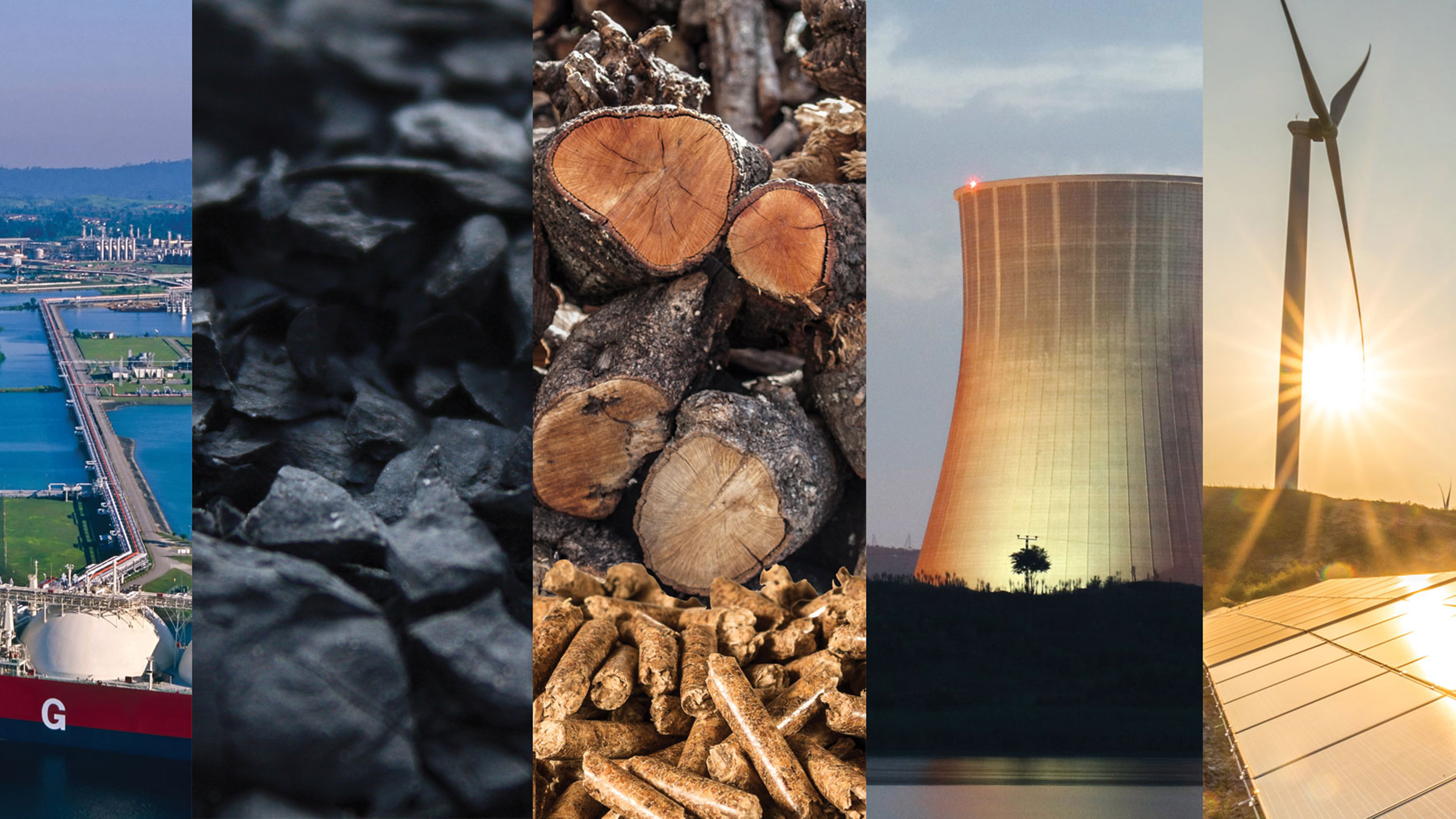Emissions
selected item

Billions of people need reliable, affordable energy every day. At the same time, that energy use is contributing to CO2 emissions. Progress on society’s energy and climate objectives requires practical approaches and new technology solutions.
Solutions require the cooperation and collaboration of governments, academia, the business community, and consumers around the world.
Governments play an important role in developing and enacting policies that seek to address climate change risks in the most practical and cost-effective way.
Policies that promote innovation can expand the available options society has for providing access to energy while reducing impacts on the environment. Additionally, policies that harness the flexibility of free markets and competition can quickly scale the best solutions for each sector within a country.
Effective policy frameworks will be critical to reduce global greenhouse gas emissions and meet society’s need for reliable and affordable energy.
Energy-related CO2 emissions peak
Billion tonnes

- Policy choices, consumer preferences and technology play a role in balancing energy supply and demand and the effects on emissions.
- From 2000 to 2021, the economic expansion in Asia Pacific saw CO2 emissions substantially rise, only partially offset by reductions in Europe and North America.
- Global annual energy-related CO2 emissions are likely to peak this decade, as countries try to reduce the emissions intensity of their economies.
- A shift to less carbon-intensive sources of electricity (for example, renewables, nuclear and natural gas) will reduce the CO2 intensity of delivered electricity in 2050 by about 65% compared to 2021.
- Efficiency gains and growing use of less carbon-intensive energy will help reduce industrial CO2 emissions relative to GDP by about 65% over the Outlook period.
- Transportation represents about 25% of CO2 emissions today, and this share is likely to grow modestly by 2050, driven by expanding commercial transportation activity.
- Global light-duty vehicle CO2 emissions are expected to peak in the mid-2020s before falling by 35% by 2050, as conventional vehicles continue to become more efficient and electric cars gain significant share.
All sectors contributing to restrain CO2 emissions growth
Global energy-related CO2 emissions - Billion tonnes

- A shift to less carbon-intensive sources of electricity (e.g., renewables, nuclear and natural gas) will reduce the CO2 intensity of delivered electricity in 2040 by more than 35 percent compared to 2017
- Efficiency gains and growing use of less carbon-intensive energy will help reduce industrial CO2 emissions relative to GDP by about 50 percent over the Outlook period
- Transportation represents about 25 percent of CO2 emissions today, and this share is likely to grow modestly to 2040 driven by expanding commercial transportation activity
- Global light-duty vehicle CO2 emissions are expected to peak in the early 2020s before falling by more than 15 percent from that peak by 2040, as more efficient conventional vehicles and electric cars gain significant share
Restraining global energy-related CO2 emissions
Billion tonnes

- The primary driver of increasing global CO2 emissions between 2000 and 2021 was economic growth, as global GDP expanded about 80%.
- Improving energy efficiency (energy use per unit of GDP) helped slow the growth in emissions, while global CO2 intensity of energy use remained fairly constant, with increased coal use in some non-OECD countries offsetting emission reductions in the OECD countries.
- As the world’s economy more than doubles by 2050, technology will be essential to mitigate emissions. The Outlook projects a sustained improvement of CO2 intensity (more solar, wind, nuclear, coal to gas switch, carbon capture and storage) in addition to accelerated efficiency gains.
- By 2050, efficiency and emissions intensity reduction are expected to contribute to a ~65% decline in the carbon intensity of the global economy.
Want to learn more about energy-related CO2 emissions and ExxonMobil’s views?
Related content

Energy supply
Energy – in all its forms – enables growth and prosperity. As economies grow, as technology advances, as consumers become more environmentally aware, and as policies adapt, global energy demand will evolve to meet changing needs.
Outlook for Energy: A perspective to 2040
The 2019 Outlook for Energy is ExxonMobil’s latest view of energy demand and supply through 2040. For many years the Outlook has helped inform ExxonMobil’s long-term business strategies, investment plans and research programs.How we develop our Outlook
ExxonMobil uses a data-driven approach to understand potential future energy demand and supply.
Global fundamentals
Energy is essential for society’s progress. Economic expansion and improving access to energy enable longer, more productive lives for the growing global population.
Pursuing a 2°C pathway
Many uncertainties exist concerning the future of energy demand and supply, including potential actions that societies may take to address the risks of climate change.